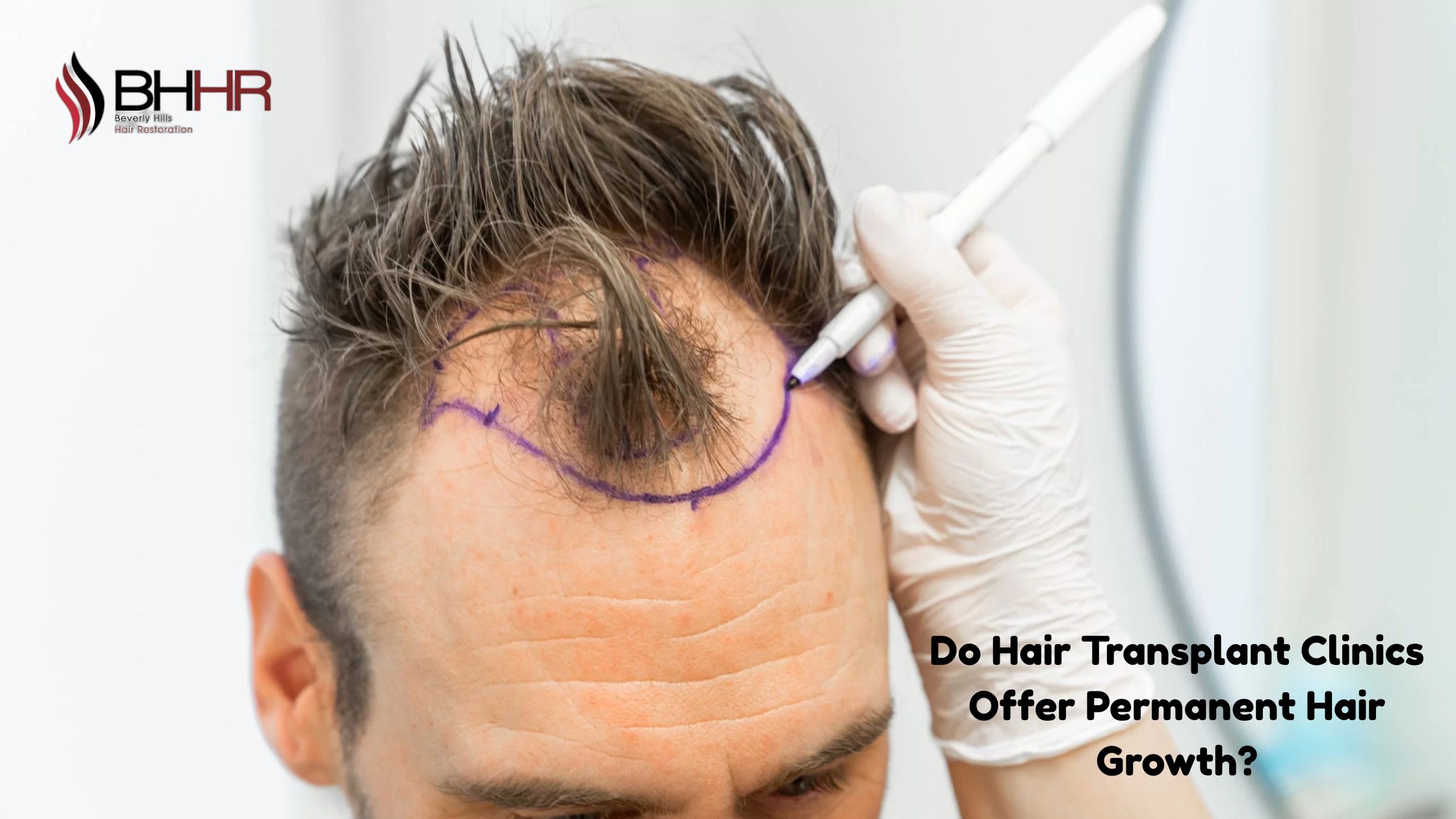Do Hair Transplant Clinics Offer Permanent Hair Growth?

Hair loss is a problem faced by millions of individuals, which more often than not prompts them to look for long-term solutions. While short-term solutions such as topical creams or oral pills may alleviate some symptoms, many are now approaching a hair transplant clinic with hopes of a permanent solution. Can one realistically anticipate long-term hair growth from these operations, however? Let’s dissect what really makes “permanent” permanent when it comes to hair restoration and what you can expect from a reputable clinic.
Understanding Hair Transplants
Hair transplant procedures have advanced significantly over the past two decades. Two of the most commonly used techniques in any modern hair transplant clinic are Follicular Unit Transplantation (FUT) and Follicular Unit Extraction (FUE). These methods involve relocating healthy hair follicles—typically from the back or sides of the scalp (the donor area)—to balding or thinning areas. The goal of a hair transplant clinic is to provide a natural-looking, fuller hairline using your own follicles. Unlike temporary solutions, this approach works by redistributing permanent hair rather than stimulating weak or dying follicles.
How Hair Transplants Work
After you’ve had a hair transplant, the transplanted hair follicles will pass through a resting period before they start growing again. Within four months, you should see new hair growth. Complete results usually take 9 to 12 months after surgery. The important thing to know is that transplanted follicles tend to be resistant to DHT (the hormone that causes pattern baldness). That means these grafts, having been implanted by your hair transplant clinic, can keep growing for a lifetime.
What “Permanent Hair Growth” Really Means
Though the concept of permanent hair restoration is intriguing, realistic expectations are a must. “Permanent” here implies the transplanted hairs which won’t fall out again. But that doesn’t guarantee that you won’t lose non-transplanted hair because of aging or other reasons. The top hair transplant clinic will instruct you on this difference and develop an ongoing plan that covers future balding if necessary. That could involve preventative treatment such as medications or Smart PRP therapy to safeguard your current hair.
Success Rates from Top Hair Transplant Clinics
Most good clinics have graft survival rates of 90–95%, which is remarkable in light of the complexity of the procedure. What distinguishes a world-class hair transplant clinic is its dedication to accurate placement, accurate angle reproduction, and follow-up care.
Multiple clinical studies and reviews reveal that patients who have been treated at experienced clinics not only experience permanent regrowth but also natural-density and coverage. This kind of achievement is the reason most now consider hair transplants to be a one-time, lifetime solution.
Key Factors That Influence Long-Term Results
The longevity of your results rests on a number of key factors. Most importantly is your surgeon’s skill. A credible hair transplant clinic has trained professionals who are certified in graft preservation and attractive hairline design. A second consideration is the quality of donor hair. If donor hair is healthy and genetically stable against balding, success rates are higher in the long run. Age, hormonal balance, and lifestyle choices (such as smoking or inappropriate diet) may also impact your new hair’s durability.
Lastly, your aftercare commitment is critical. Adhering to the clinic’s post-operative guidelines guarantees grafts take hold well and healing takes place without any issues.
Maximizing the Longevity of Your Hair Transplant
Although the outcome is deemed to be permanent, a few patients might require periodic follow-up procedures to preserve overall density. Clinics tend to suggest Smart PRP (Platelet-Rich Plasma) therapy for stimulating regrowth and fortifying adjacent follicles. The optimal hair transplant clinic will have a post-transplant maintenance protocol.
What Patients Should Know Before Committing
It’s not only about looks choosing to go to a hair transplant clinic is a medical decision. For that reason, it’s essential to do your homework and select a clinic with a track record. Seek clinics that offer clear consultations, up-front pricing, and follow-up care in detail. At your initial consultation, the physician should examine your pattern of hair loss, review future thinning of the hair, and custom design a plan for treatment that provides both immediate and long-term results. It’s reassuring to know that a clinic is not only concerned with today’s transplant, but tomorrow’s hair care.
Conclusion
So, do hair transplant clinics provide permanent hair growth? In most instances yes. The transferred follicles from the donor region are immune to future loss, so the newly planted hairs have the potential to last for a lifetime. But the long-term success of the procedure is contingent on the skill of the surgeon, the clinic protocol, and your continued care. A trusted hair transplant clinic won’t simply provide you with a fuller head of hair it will offer education, guidance, and resources to keep your results long-lasting. If you’re thinking about hair restoration and you desire outcomes that are the stuff of a lifetime, ensure your first move is selecting the right clinic.



